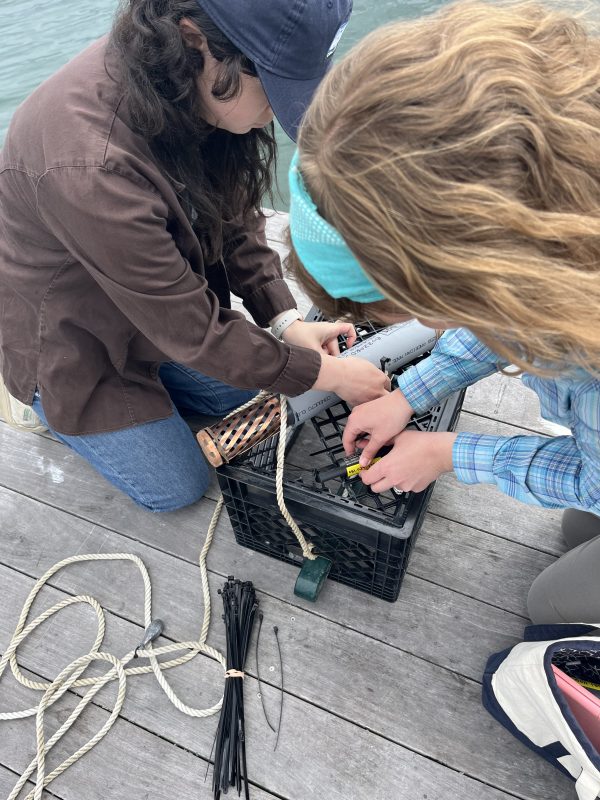Coalition Deploys New Autonomous Loggers in Sites Around the Bay

The Coalition’s Lilia Bartolotta, left, and Kristin Huizenga prep the loggers on the dock of Onset Bay.
Coalition staffers Lara Gulmann, Lilia Bartolotta, and Kristin Huizenga lug buckets of gear out to the end of the Onset Bay Center’s dock, where the first of many new water sensors will be deployed this season.
But the new logger will not be alone. They also send down the older version of a logger that has been used for years at OB1, as the station is called.
They check the housings, secure the sensors one last time, and drop both into the Bay so they come to rest 30 cm above the bottom. Someone walking out to the end of the dock may see the line with the Coalition’s logo displayed on it. But to the rest of the world, they go unnoticed, quietly doing their job to measure dissolved oxygen, salinity levels, and water temperature, the trio of measurements historically used by the Coalition to monitor the Bay.
There are many benefits to these autonomous loggers. They measure data at short intervals throughout the day. Volunteers measure the same data once a day in the early morning. With autonomous readers, the fluctuation of data within the day, based on factors such as sunlight, wind, and tidal activity, can vary, and is not caught by volunteers going once a day.
Coalition staff check these monitors regularly, to download data (self-reporting monitors using wireless technology are very expensive), check on the conditions and clean the devices if necessary. “Aquatic organisms love to grow on these,” says Bartolotta. “Barnacles, mainly, but also calcareous worms and tunicates.”
The staff spent time calibrating these monitors in the Marion location throughout the spring. The scientists say that the new loggers are better for integration with the volunteers.